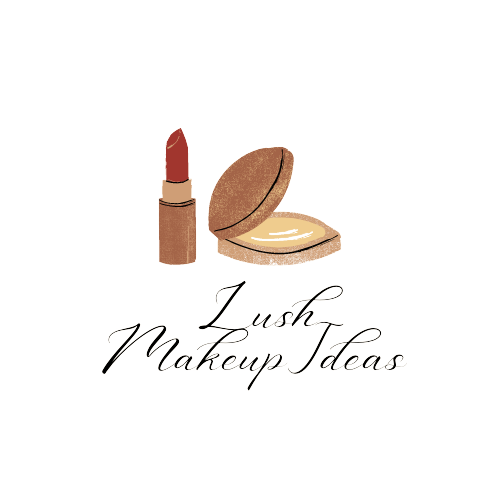Hey there! Are you interested in learning all about face makeup tutorials? Well, you’re in luck! In this article, we’re going to delve into the world of face makeup tutorials and discover all the tips and tricks you need to create stunning looks. Whether you’re a beginner or a seasoned makeup lover, there’s something here for everyone.
But that’s not all! We’ll cover everything from the basics of foundation and concealer to advanced techniques like contouring and highlighting. You’ll learn how to choose the right products for your skin type, how to apply them flawlessly, and how to enhance your natural features. So, get ready to step up your makeup game and transform your face into a canvas for endless creativity. Stay tuned for the ultimate face makeup tutorials that will help you unleash your inner makeup artist!
Face Makeup Tutorials
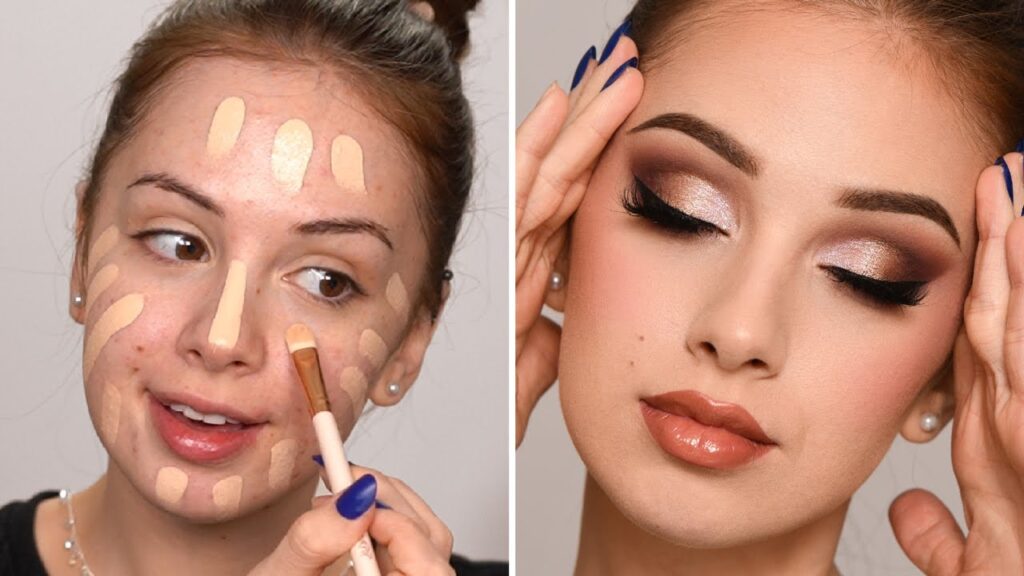
This image is property of i.ytimg.com.
Overview of Face Makeup
Understanding the importance of face makeup
Face makeup plays a crucial role in enhancing our natural beauty and boosting our confidence. It allows us to accentuate our best features, hide imperfections, and achieve a flawless complexion. Whether you’re getting ready for a special occasion or simply want to enhance your everyday look, mastering the art of face makeup is essential. In this article, we will guide you through the process step by step, covering everything from the basics to advanced techniques.
Common misconceptions about face makeup
Before we delve into the world of face makeup tutorials, it’s crucial to address some common misconceptions. One of the main misconceptions is that makeup is only for those who want to look dramatically different or “fake.” However, face makeup can be applied in a way that enhances your natural beauty, creating a subtle and polished look. Additionally, some people believe that certain makeup techniques are limited to specific skin types or face shapes. However, with the right products and techniques, anyone can achieve stunning results, regardless of their unique features.
Benefits of using face makeup
Using face makeup offers numerous benefits beyond simply enhancing our appearance. It can boost our self-esteem, allowing us to feel more confident in our skin. Additionally, face makeup can serve as a form of self-expression, allowing us to experiment with different styles and looks. It can also act as a protective barrier, shielding our skin from environmental factors such as pollution and harmful UV rays. With these benefits in mind, let’s dive into the world of face makeup tutorials.
Preparation for Face Makeup
Cleansing and moisturizing the face
The first step in any face makeup tutorial is preparing the canvas: your face. Start by cleansing your face thoroughly to remove any dirt, oil, or makeup residue. This will ensure that your makeup goes on smoothly and adheres properly. After cleansing, apply a moisturizer suitable for your skin type. This step is essential to hydrate your skin and create a smooth base for your makeup.
Choosing the right foundation shade
Foundation is the base of any face makeup look, so choosing the right shade is crucial. The goal is to find a shade that matches your skin tone seamlessly, creating a natural-looking finish. To select the right shade, test the foundation on your jawline and assess how well it blends with your natural skin color. If possible, check the foundation shade in natural light to ensure an accurate match.
Applying primer before makeup
Primer acts as a base for your foundation, extending its longevity and providing a smooth surface for application. It also minimizes the appearance of pores and fine lines. After moisturizing, apply a small amount of primer all over your face, focusing on areas where you have visible pores or texture. Gently massage it into your skin, allowing it to absorb before moving on to the next step.
Foundation Application
Types of foundation and their purposes
There are various types of foundation available, each with its own purpose and finish. Liquid foundation is the most common type, providing medium to full coverage. It’s versatile and suitable for most skin types. Powder foundation, on the other hand, offers a lighter coverage and is ideal for those with oily or combination skin. Cream and stick foundations provide excellent coverage and are often used for special occasions or photo shoots.
Correcting skin discoloration with foundation
One of the main reasons we use foundation is to even out our skin tone and correct any discoloration. Whether you have hyperpigmentation, redness, or dark spots, foundation can help create a seamless and uniform complexion. To correct discoloration, choose a foundation shade that matches your skin tone and apply it evenly using a foundation brush or sponge. Build up the coverage in areas where you need it the most, such as under the eyes or around the nose.
Blending techniques for a flawless finish
To achieve a flawless finish with your foundation, proper blending techniques are essential. Buffing and stippling are two popular methods. Buffing involves using circular motions to blend the foundation into your skin, while stippling involves gently tapping the foundation onto your face with a stippling brush or sponge. Regardless of the technique you choose, make sure to blend the foundation into your hairline, jawline, and neck to avoid any noticeable lines or demarcations.
Concealing Imperfections
Using concealer to hide blemishes and dark circles
Concealer is a powerful tool when it comes to hiding imperfections such as blemishes, dark circles, and redness. Choose a concealer shade that matches your skin tone or is slightly lighter, depending on the desired effect. Dab the concealer onto the areas you want to conceal and gently blend it out using your fingertips or a concealer brush. For dark circles, apply the concealer in an upside-down triangle shape under the eyes to brighten the area.
Color-correcting techniques
In addition to concealer, color-correcting can help neutralize specific discolorations. Color correctors come in various shades, with each shade targeting a specific issue. For example, green color correctors can counteract redness, while peach or orange correctors can cancel out dark circles. Apply the color corrector onto the affected area and blend it out before applying your concealer and foundation.
Highlighting and contouring for a sculpted look
Highlighting and contouring are techniques used to add dimension and enhance the natural contours of your face. Highlighting involves applying a lighter shade of concealer or highlighter on areas you want to bring forward, such as the cheekbones, brow bone, and the center of the forehead. Contouring, on the other hand, involves using a darker shade to create shadows and define your features. Apply the contour product along the hollows of your cheeks, the sides of your nose, and under your jawline, blending it out for a seamless finish.
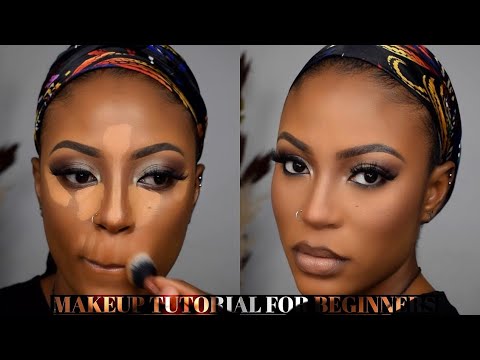
This image is property of i.ytimg.com.
Setting Your Base
Choosing the right setting powder
Setting powder is essential for making your foundation last longer and preventing it from creasing or transferring. It also helps control shine and creates a matte or dewy finish, depending on your preference. Choose a setting powder that is translucent or matches your skin tone closely. Avoid powders that are too light as they may give a ghostly appearance in photographs.
Applying powder to set foundation
After applying your foundation and concealer, gently dust a small amount of setting powder all over your face using a fluffy brush. Focus on areas that tend to get oily or where your makeup tends to crease, such as the T-zone. Press the powder into your skin using a powder puff or sponge for a more long-lasting effect. Remember to blend it well to avoid any visible white cast.
Baking techniques for long-lasting makeup
Baking is a technique commonly used by makeup artists to ensure long-lasting and crease-free makeup. It involves applying a generous amount of powder onto areas where you want extra coverage, such as the under-eye area, smile lines, or forehead. Leave the powder to “bake” for a few minutes, allowing the heat from your skin to set the makeup. Afterward, gently brush away the excess powder for a flawless and matte finish.
Blush, Bronzer, and Highlighter
Choosing the right blush shade for your skin tone
Blush adds a healthy flush of color to your complexion and helps bring life to your face. When selecting a blush shade, consider your skin tone. For fair skin, opt for soft pinks or peachy tones. Medium skin tones can rock vibrant corals or warm berry shades. Deep skin tones look stunning with rich plums or deep reds. Apply blush on the apples of your cheeks and blend it out toward your temples for a natural-looking flush.
Contouring with bronzer for definition
Bronzer is a versatile product that can be used to create a sun-kissed glow or as a contour powder. Choose a shade that is one to two shades darker than your natural skin tone. Apply the bronzer in the hollows of your cheeks, along your hairline, and under your jawline to create a subtle shadow. Blend it out well to avoid any harsh lines and achieve a natural-looking contour.
Enhancing features with highlighter
Highlighter is a game-changer when it comes to adding a radiant glow to your face. Apply it on the high points of your face, such as the cheekbones, bridge of the nose, cupid’s bow, and brow bone. Use a fan brush or a small fluffy brush to gently sweep the highlighter onto these areas for a natural and lit-from-within glow. Remember to blend it well to avoid any harsh, visible lines.
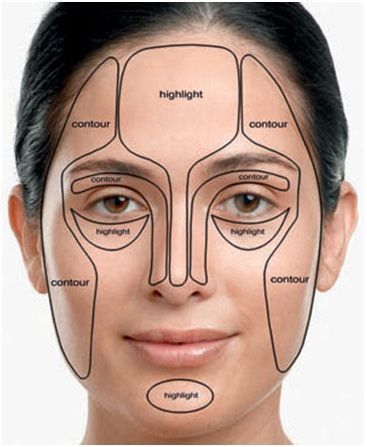
This image is property of i.pinimg.com.
Eyeshadow and Eyeliner Application
Creating various eyeshadow looks
Eyeshadow allows you to unleash your creativity and experiment with different looks. Whether you prefer a natural, everyday look or a glamorous smoky eye, the key is to blend your eyeshadows seamlessly. Start by applying a neutral base color all over your eyelids. Then, apply a slightly darker shade to the crease to add depth. Lastly, use a shimmery or bold color on the eyelid or outer corners to make your eyes pop. Blend the colors together using a blending brush for a seamless finish.
Different eyeliner styles and techniques
Eyeliner can dramatically change the appearance of your eyes, making them appear larger, more defined, or sultry. There are various eyeliner styles and techniques to choose from, such as a classic winged liner, tightlining, or a smudged smoky eye effect. Experiment with different techniques and find the one that works best for your eye shape and desired look. Remember to practice and be patient, as mastering eyeliner takes time and precision.
Eyeshadow blending tips for a seamless finish
Blending is the key to achieving a seamless and professional-looking eyeshadow application. Start by using a fluffy blending brush and work with light, circular motions to blend the colors together. Begin by blending your transition shade into the crease, gradually building up the intensity. Use a clean blending brush to soften any harsh lines and ensure a flawless gradient effect.
Perfecting the Eyebrows
Filling in eyebrows with brow products
Well-groomed eyebrows frame the face and enhance your overall appearance. Fill in sparse areas using an eyebrow pencil, powder, or pomade in a shade that matches your natural hair color. Start by outlining the shape of your brows and then fill them in with short, feathery strokes for a natural effect. Use a spoolie brush to comb through your brows and blend the product to achieve a polished look.
Eyebrow shaping techniques
Shaping your eyebrows is essential to create a flattering and balanced look. Find your arch by aligning a straight object, such as an eyebrow brush or pencil, with the outer edge of your nostril to the outer edge of your iris. This will help determine where your arch should be. Pluck any stray hairs and use an eyebrow brush or clear gel to tame and shape your brows. Remember to step back occasionally and assess your progress to ensure symmetry.
Creating natural-looking brows
If you prefer a more natural-looking brow, opt for a tinted brow gel or a non-precise pencil. Use a light hand and mimic hair-like strokes to fill in any gaps. Remember to comb through your brows with a spoolie brush to blend the product and create a soft, feathered effect. This technique will give you beautifully defined yet natural brows.
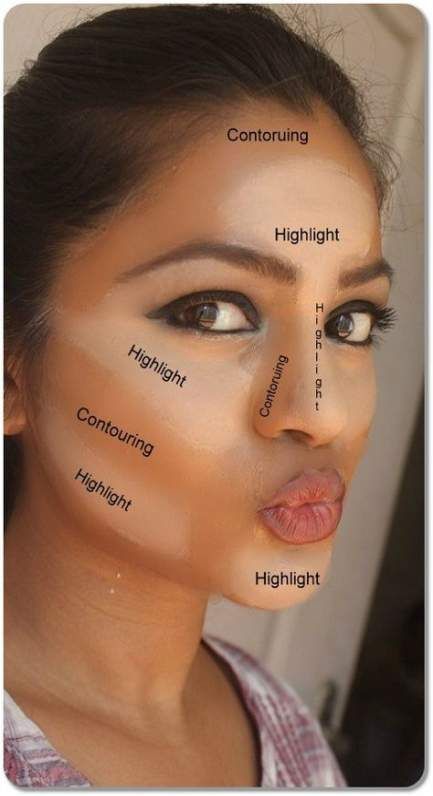
This image is property of i.pinimg.com.
Lipstick and Lip Liner
Choosing the right lipstick shade
Lipstick is the finishing touch to any makeup look, adding color and completing the overall aesthetic. When selecting a lipstick shade, consider your skin tone and the occasion. Neutral shades, such as nudes or soft pinks, are versatile for everyday wear, while bold reds or deep berries can add drama for special events. Additionally, matte lipsticks offer a more long-lasting finish, while glosses provide a luscious shine.
Lip liner techniques for defined lips
Lip liner is a great tool for defining your lips and preventing feathering or bleeding of your lipstick. Start by outlining your natural lip shape, slightly overlining if desired to create the illusion of fuller lips. Fill in your entire lips with the lip liner to create a base for your lipstick and increase its longevity. Blend the lip liner with a lip brush or your fingertip for a more natural transition.
Creating ombre or gradient lip effects
For a trendy ombre or gradient lip effect, choose two lipstick shades in the same color family. Apply the darker shade to the outer corners of your lips and the lighter shade to the center. Use a lip brush or your fingertip to blend the two shades together, creating a seamless transition. This technique adds dimension and a visually pleasing effect to your lips.
Conclusion
Summary of face makeup techniques
Congratulations! You have now learned various face makeup techniques, from preparing your skin to enhancing your features. Understanding the importance of face makeup, debunking common misconceptions, and exploring the benefits it offers can empower you to use makeup as a tool to enhance your natural beauty.
Tips for achieving a flawless face
To achieve a flawless face makeup look, proper preparation is key. Cleansing and moisturizing your face, choosing the right foundation shade, and applying primer before makeup will ensure a smooth canvas. Mastering foundation application, concealing imperfections, and setting your base with powder will create a long-lasting and seamless finish.
Don’t forget to explore blush, bronzer, and highlighter to add warmth, definition, and radiance to your complexion. Experiment with eyeshadow and eyeliner to enhance your eyes, perfect your brows for a polished look, and complete your makeup with the perfect lipstick shade and lip liner technique.
Exploring different makeup styles
Finally, embrace your creativity and experiment with different makeup styles. Makeup is a form of self-expression and allows you to play with colors, textures, and finishes. Whether you prefer a natural, everyday look or a daring and bold statement, the world of face makeup tutorials is yours to explore. Remember to have fun and embrace your unique beauty.
So go ahead, unleash your inner artist, and have fun creating stunning face makeup looks!
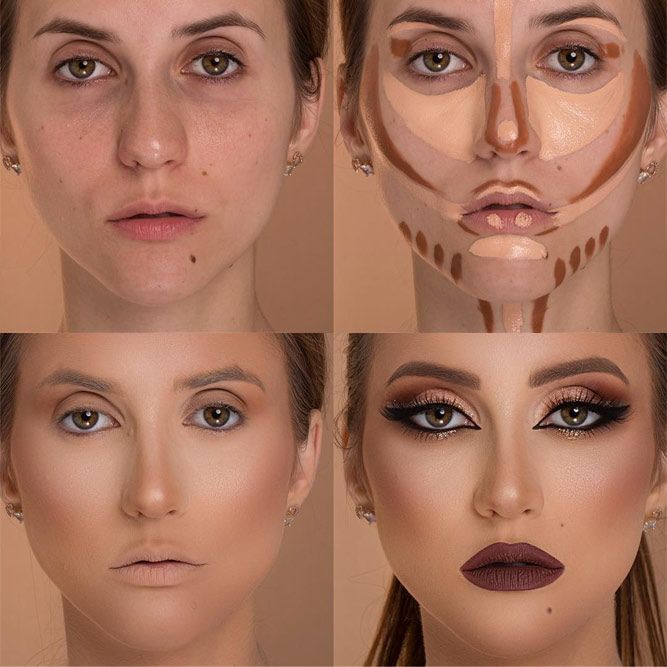
This image is property of glaminati.com.
